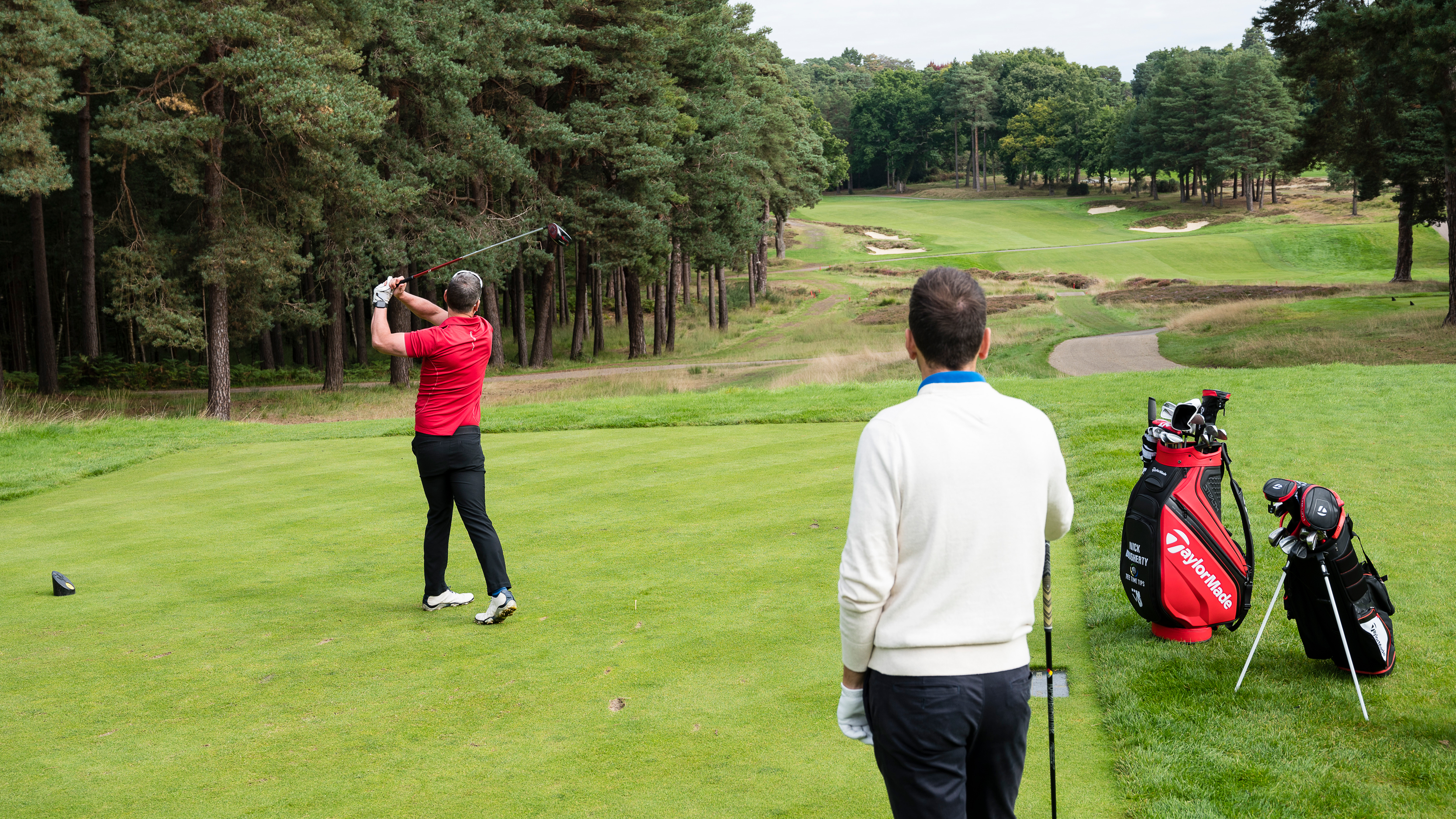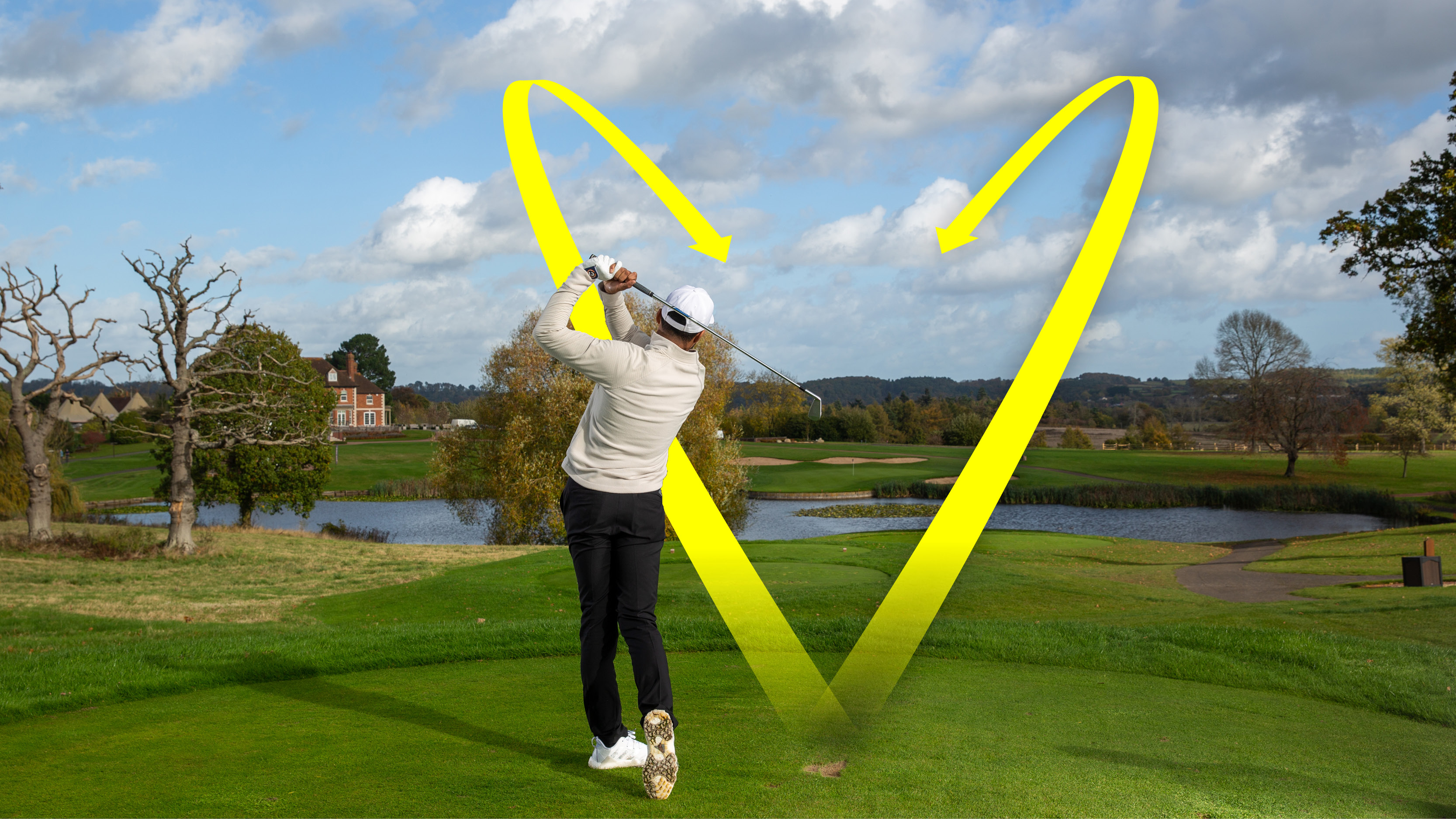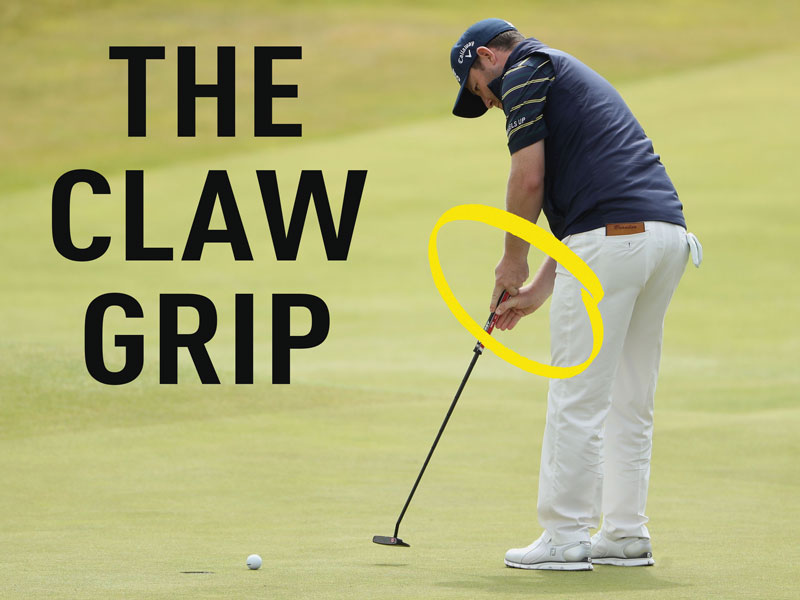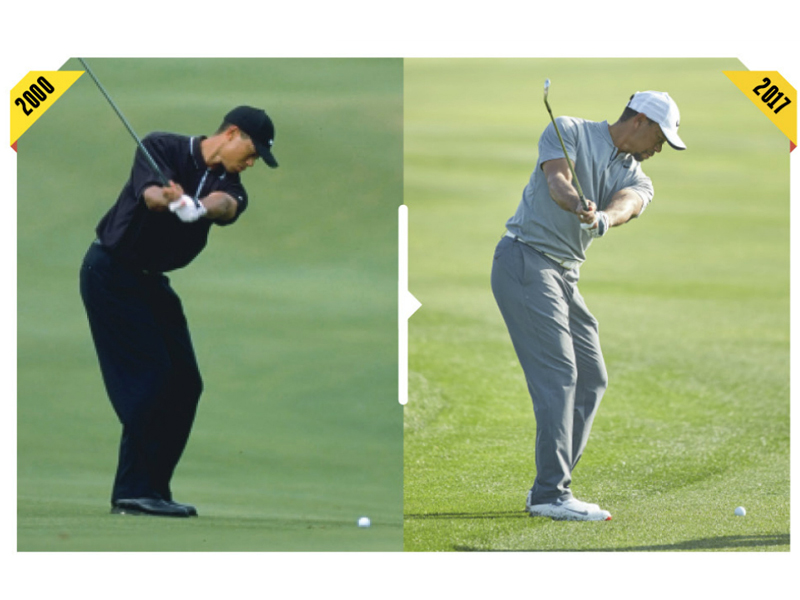How To Overcome Nerves On The Golf Course
Nick Dougherty shares some simple tricks that will help golfers master their nerves


Nobody is immune to pressure on the course. From tour pros playing at the highest level to recreational golfers out for a weekend bounce game with friends, it's only normal to feel the knees shake now and then. What matters is how you cope with it. TaylorMade ambassador Nick Dougherty shares some simple techniques in the video and article below...
When it comes to dealing with nerves, the world's best players are equipped with mental tools they can rely on. But that doesn't mean they are infallible. Amateurs should take comfort in that and cut themselves some slack in the big moments.
In a career full of highlights, Nick led the 2007 US Open at Oakmont after day one and teed it up with a certain Tiger Woods for Saturday's third round, so he knows a thing or two about pressure. By and large, he's swapped his clubs for a microphone these days, but he tapped into his wealth of experience to help Golf Monthly reader Andy Edom. Here's what you can learn.
Have a plan
First and foremost, it starts with a plan, says Dougherty. Whether it's compiled with a coach or on your own, it's an essential part of managing your game, expectations and your nerves. Spend a few minutes before a round checking the weather and thinking about your strategy.
"Having a plan on the course is so important," Nick said. "For players like Andy who have a handicap around 18, you’re in that beautiful zone where some days can be game-changing but you always have the chance of having those shocking days as well.
"So I think it's best to keep it nice and simple. Having a plan with your coach is always a good idea. Andy is a great example of this. Have a plan for how you’re going to improve your game, but when you go out on the course, go out to play well."

Making a plan and sticking to it will help ease the pressure
Play to play great shots
Rounds are few and far between for Dougherty now, so the Englishman is well placed to help amateurs who can't devote as much time to the game as they'd like. As well as sticking to a plan, he is a big advocate of "playing to play great." One way he keeps his mind in the right place to do this is by making notes on his TeeTimeTips driver headcover.
Subscribe to the Golf Monthly newsletter to stay up to date with all the latest tour news, equipment news, reviews, head-to-heads and buyer’s guides from our team of experienced experts.
"What I do with the headcover sounds like the most basic thing in the world but I wish I’d had this when I was playing. I write on my one, 'Swing for the fences', which means don’t be a chicken.
"Because I know when I’m out there and under pressure, I start making bad decisions. And as soon as I’ve hit one of my bad shots, I’ll start reaching down the bag. ‘Can I hit 3-wood down here?’ Before you know it, you’re reaching for a 6-iron. Swing for the fence, that’s it.
A post shared by Nick Dougherty (@nickdougherty5)
A photo posted by on
"That then ties into, ‘Play to play great shots’. In other words, don’t play to not embarrass yourself, because that’s what happened in my career when I started to struggle. I used to think a 76 was alright because it wasn't super embarrassing. But I've missed the cut and I'm going home.
"So I needed to shift my mentality. Go out there and hit some bad shots but play to hit great shots. What a great mindset if we could all take that to the course. At the end of this life when we stop playing the game, that’s all we’ll have. ‘Do you remember that hole-in-one I made that day’ or, ‘Do you remember that par-5 I knocked it on in two’.
"We won’t be going, 'Do you remember that time I got up-and-down to stay inside the buffer?’ We’re not telling those stories are we?

Play to play great shots and don't worry about embarrassing yourself
"Finally, I write, ‘All in, ground up’. And that means tie yourself into an emotion that is, ‘I am just going to be everything I can on this shot and accept the consequences’. Ground up for me is a reminder that I need to feel like I use the ground when I swing down in my transition. So that’s a technical thing for me but in my mind I immediately have a feeling of what that means because I don’t use the ground that well. I’m still learning.
"These are super specific to me and the reason I love it is because it’s on my driver so when I come back to the bag and I start to feel nervous, every time I look at my bag it’s telling me to swing for the fences. You can write what you want on there, it can be R-rated if it needs to be to give you the wake-up call you need in your game, but for me, they are the things that make me accountable for what makes me play well."

A lifelong golf fan, Andy graduated in 2019 with a degree in Sports Journalism and got his first role in the industry as the Instruction Editor for National Club Golfer. From there, he decided to go freelance and now covers a variety of topics for Golf Monthly.
Andy took up the game at the age of seven and even harboured ambitions of a career in the professional ranks for a spell. That didn’t pan out, but he still enjoys his weekend golf at Royal Troon and holds a scratch handicap. As a side note, he's made five holes-in-one and could quite possibly be Retief Goosen’s biggest fan.
As well as the above, some of Andy's work has featured on websites such as goal.com, dailyrecord.co.uk, and theopen.com.
What's in Andy's bag?
Driver: Callaway Mavrik Sub-Zero (9°)
3-wood: TaylorMade Stealth 2 Plus (15°)
Driving iron: Titleist U500 (17°)
Irons: Mizuno mp32 (4-PW)
Wedges: Titleist Vokey SM9 (50°, 54° and 58°)
Putter: Titleist Scotty Cameron Newport 2.5
Ball: TaylorMade TP5x
-
 How Much Money Did The Average LPGA Tour Pro Make In 2025?
How Much Money Did The Average LPGA Tour Pro Make In 2025?There was a record amount of prize money available to professionals on the LPGA Tour in 2025 - but just how much did the average player make this season?
-
 Are We Excited By (Or Nervous About) The PGA Tour's Potential Sweeping Changes?
Are We Excited By (Or Nervous About) The PGA Tour's Potential Sweeping Changes?With the PGA Tour reportedly looking at making seismic changes, Golf Monthly's tour experts discuss whether we're enthused or underwhelmed by them
-
 I Followed Tiger Woods For His Pre-Round Warm-Up... Here Is Every Shot He Hit!
I Followed Tiger Woods For His Pre-Round Warm-Up... Here Is Every Shot He Hit!I travelled to the Genesis Invitational to see Tiger Woods play one of the PGA Tour's most iconic venues, and his warm-up routine left me totally speechless...
-
 Why Do Golfers Have Back Problems?
Why Do Golfers Have Back Problems?Fitness expert Jamie Greaves outlines four crucial considerations for golfers battling a back injury
-
 How To Hit Draws And Fades
How To Hit Draws And FadesLearn how to hit draws and fades with the help of PGA professional and Golf Monthly Top 50 Coach Trey Niven...
-
 Claw Grip Putting Technique Analysis
Claw Grip Putting Technique AnalysisGM Top 25 coach Ged Walters looks at the claw grip and, specifically, how Branden Grace uses it to good effect
-
 How To Build Confidence In Golf
How To Build Confidence In GolfMental golf expert Gary Leboff teaches you how to trust your inner self and achieve lasting results
-
 How Tiger's Swing Has Changed
How Tiger's Swing Has Changed